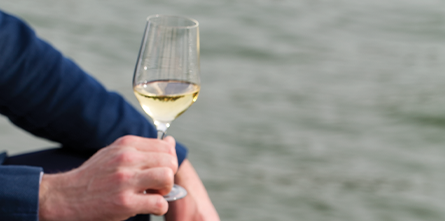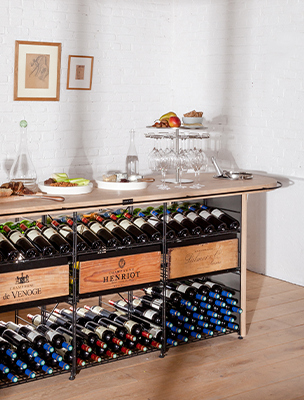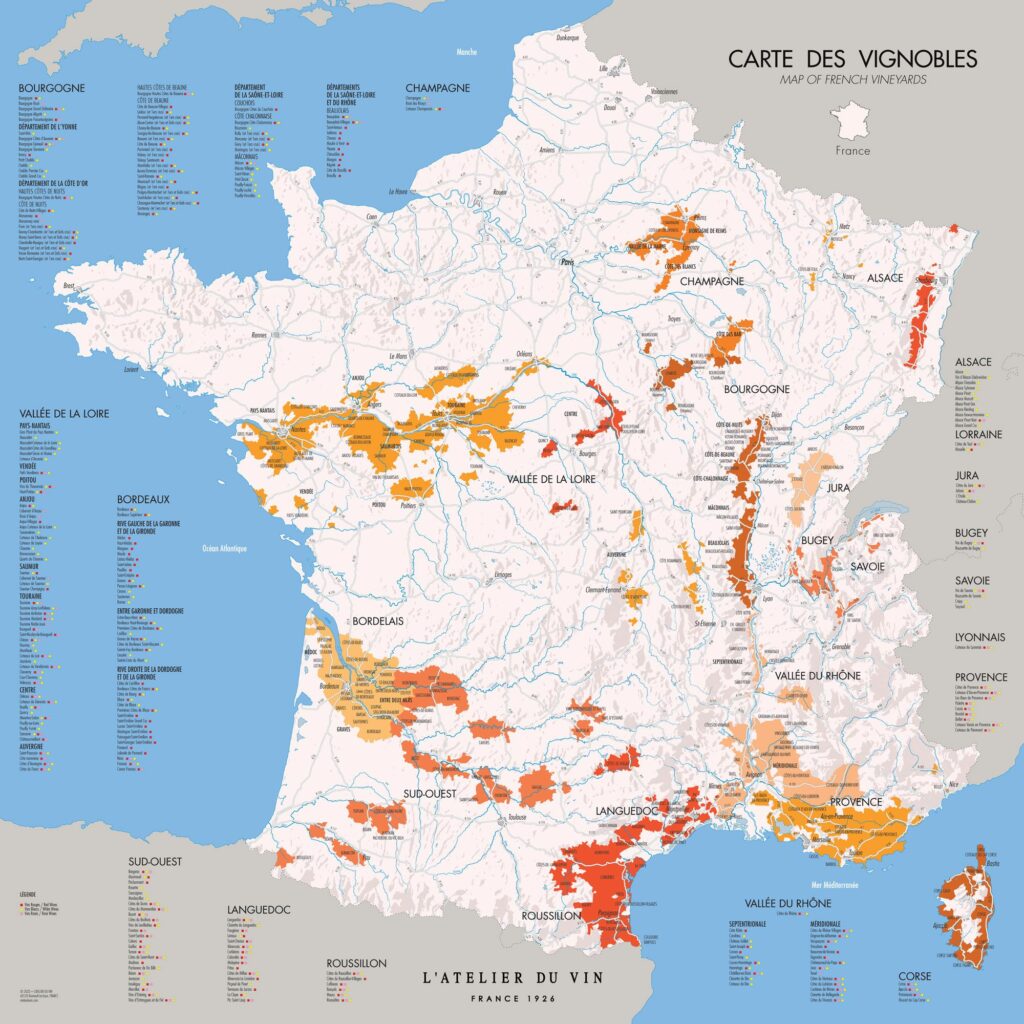
© Marie Lukasiewicz
The world of wine offers a palette of flavors and aromas that never fails to delight wine lovers and connoisseurs alike. At the heart of this diversity are different grape varieties—the true stars of viticulture, which give each different wine a unique character. Read on to discover all you need to know about grape varieties, their distinctive characteristics, their origins and the types of wine they produce.
What is a grape variety?
A grape variety is a type of grapevine grown to produce grapes used mainly for wine-making. The choice of grape variety is crucial in the making of a wine, as it directly influences organoleptic characteristics such as color, aroma and structure. The importance of grape varieties in wine-making and tasting cannot be overstated. Each grape variety brings its own unique personality to the wine, often reflecting the land and viticultural traditions of its region of origin.
France, with its many wine-making regions, offers a remarkable diversity of grape varieties, each adapted to the specific climatic conditions and soils of its terroir.
Did you know? Phylloxera, a tiny aphid-like insect native to North America, wreaked havoc on European vineyards at the end of the 19th century. Hailing from the United States but accidentally introduced to Europe around 1863, phylloxera spread rapidly and decimated almost all European vineyards. The solution to this crisis led to a revolution in viticultural practices, as European grape varieties were grafted onto American rootstocks that had developed resistance to the parasite. This grafting technique is still used today.
The main grape varieties used in red wine

© Marie Lukasiewicz
Pinot Noir
Originally from the region of Burgundy, Pinot Noir is renowned for its subtlety and roundness. It yields light to medium-bodied wines with aromas evoking red fruit and sometimes undergrowth. This delicate grape variety is highly sensitive to climatic variations and can produce wines of remarkable complexity.
Cabernet Sauvignon
Cabernet Sauvignon is the most widespread grape variety in the world, known for its powerful tannic structure and aromas of blackcurrant, sweet spices and cedar. It produces bold wines suitable for aging and often blended with Merlot or Cabernet Franc to balance out its powerful nature. Cabernet Sauvignon is a perfect match with grilled or roasted red meat such as beef or lamb. It also pairs well with hard cheeses and rich sauces.
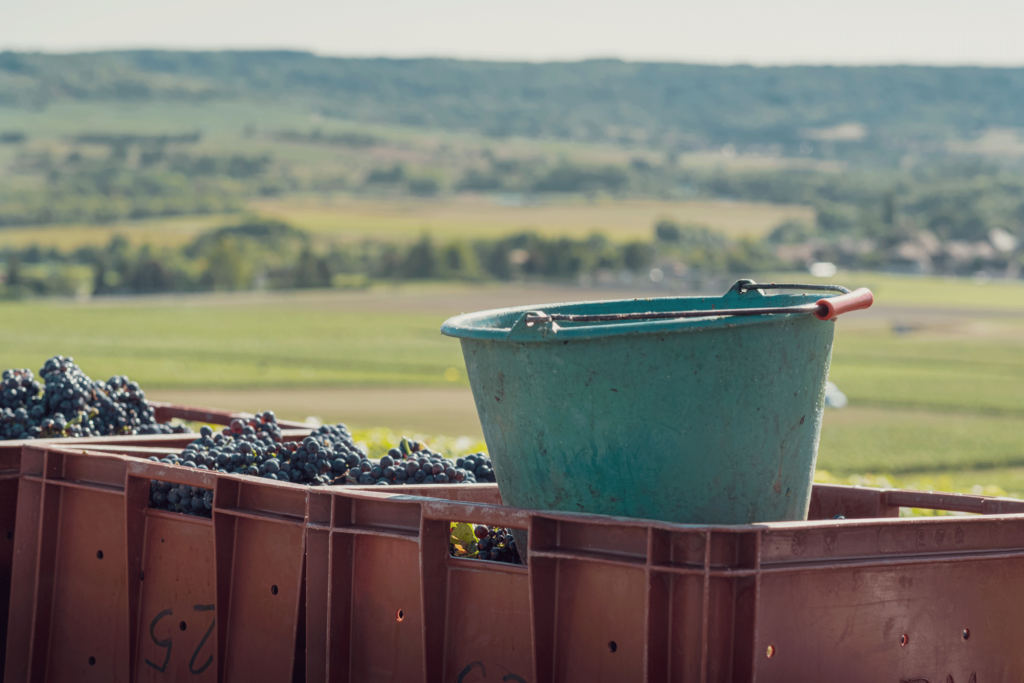
© Alexandre Couvreux
Cabernet Franc
Native to southwestern France, Cabernet Franc is often used in blends with Cabernet Sauvignon and Merlot. It brings subtlety and herbaceous aromas to wines.
More precocious than Cabernet Sauvignon, “Cab Franc” produces slightly less tannic wines with notes of raspberry, violet and sometimes green pepper. It is particularly important to the Loire region, where it is used for the famous Chinon and Bourgueil wines.
Gamay
The emblematic grape variety of Beaujolais, Gamay yields light, fruity wines imbued with a fresh character and aromas of red fruits. It produces wines that are generally enjoyed young, the most famous of which is Beaujolais Nouveau. However, certain terroirs, notably in the Beaujolais crus, allow for more structured Gamay wines suitable for aging.

© Philippe Goron
Merlot
Merlot is a major grape variety in Bordeaux which yields round, medium-bodied wines with aromas of plum, cherry and chocolate. Ripening earlier than Cabernet Sauvignon, it brings supple and fruity notes to blends—while also producing excellent single-varietal wines.
Malbec
Originally from southwestern France, these days Malbec is most widely associated with Argentina. The grape yields colorful, structured wines with aromas of blackberry, plum and spice. It can produce powerful, complex wines, particularly well-suited to grilled meats.
Syrah/Shiraz
The flagship grape variety of the Northern Rhône Valley, Syrah (known as Shiraz in Australia) produces full-bodied wines with aromas of black fruits, pepper, and sometimes violet. It can give birth to wines that are powerful, spicy, and capable of being aged for many years.

© Philippe Goron
Syrah pairs well with grilled or roasted meats, game and spicy food. It is also an excellent match for strong cheeses and Mediterranean cuisine.
The major grape varieties used in white wine
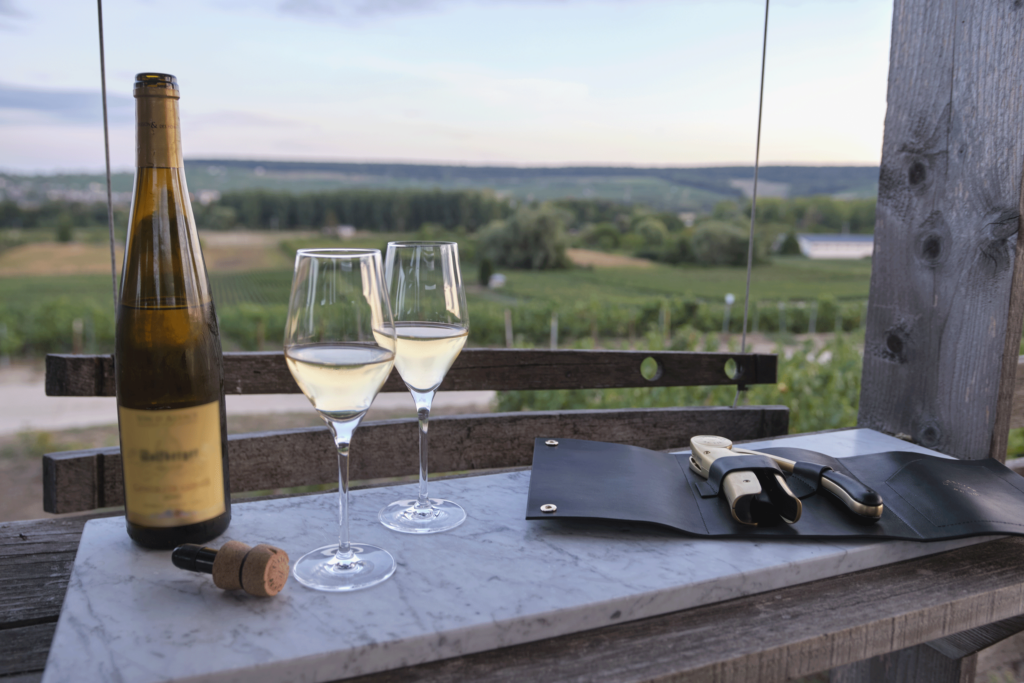
© Alexandre Couvreux
Chardonnay
A versatile grape variety native to Burgundy, Chardonnay is ideal for a wide range of terroirs and wine-making styles. It can produce fresh wines with a strong mineral character (such as Chablis) or richer, woodier wines (such as Côte d’Or). Typical aromas include apple, lemon, butter and hazelnut.

© Philippe Goron
Chardonnay goes well with seafood such as fish served in creamy sauces as well as poultry and soft cheeses. The woodier versions are an excellent match with rich dishes such as lobster or creamy pasta.
Sauvignon Blanc
Well-known for its herbaceous and exotic fruit aromas, Sauvignon Blanc produces lively and aromatic wines. Native to the Loire region, it has also made a name for itself in New Zealand. The grape produces fresh, tangy wines—perfect as aperitifs and paired with seafood. It also goes well with light Asian dishes and fresh herbs.

© Philippe Goron
Riesling
The leading grape variety in Alsace and Germany, Riesling is appreciated for its aromatic subtlety and ability to express the character of the soil. It can produce a wide range of wines, from the driest to the sweetest, always marked by striking acidity and aromas of white fruit. Dry Riesling goes perfectly with seafood, smoked fish and Asian cuisine. Milder versions are excellent with blue cheese, fruit-based desserts and spicy cuisine.
Chenin Blanc
Originally from the Loire region, Chenin Blanc is a versatile grape variety capable of producing dry, sweet and sparkling wines. It is known for its notable acidity, along with aromas of green apple, honey and quince. With age, it can develop notes of dried fruit and beeswax.
Grenache
This Mediterranean grape, a white version of Grenache Noir, produces full-bodied and rich wines with aromas of white fruits and Provencal herbs. It is often used to add body and alcohol to white wine blends from Rhône and Languedoc-Roussillon. Grenache Blanc pairs well with grilled seafood, fish in sauce, poultry and soft cheeses. It is also excellent with Mediterranean cuisine and dishes that use aromatic herbs.
How to store your wine to best preserve its aromas

© Architecture Intérieure du Vin – Miléna Latil
Wine conservation is an art form that can greatly influence the expression of each grape variety’s aromas. Proper storage techniques allow the wine to develop in complexity and reach its full potential when tasted. Here are some essential tips for preserving the aromas of your wines:
Before opening
- Store your wines in a cool place, ideally between 10°C and 15°C. Temperature fluctuations are a wine’s worst enemy, so aim for maximum stability.
- Maintain humidity levels between 60% and 80% to preserve the corks and prevent evaporation.
- Light is another thing that can affect wine aromas—especially UV rays. Store away from light.
- Store bottles lying down to keep the cork moist and prevent oxidation.
After opening
Carefully keep the bottle corked with a hermetic stopper at all times except when serving.
- Store your open wine bottles in the refrigerator, even reds, to slow down the oxidation process.
- Drink whites and rosés within 3 to 5 days, and reds within 5 to 7 days after opening.
When should you decant your wine?
Decanting can be beneficial for some wines—particularly young, tannic reds or aged wines. This step helps oxygenate the wine, softening the tannins and releasing aromas. However, the duration of decanting varies depending on the wine.
- Young, tannic wines: Pour into a decanter 1 to 2 hours before serving.
- Aged wines: Leave in the decanter for 30 minutes to 1 hour, while monitoring how the aromas develop along the way.

© Marie Lukasiewicz
Understanding grape varieties is essential to fully appreciate the diversity and richness of the world of wine. Each grape variety brings its own unique personality—the result of the terroir, climate and wine-making techniques employed.
Keen to test your knowledge or quiz your friends in a fun way? Discover L’Atelier du Vin’s Wine Quiz. It’s a great way to learn and share your passion for wine while having a great time.
Whether you’re a novice or an amateur, exploring the diversity of grape varieties will open up new taste horizons and enrich your oenological experience in a major way.
Copyrights.
Editorial, visual and graphic elements strictly linked to copyrights. For any request of partial or total use, contact us.



